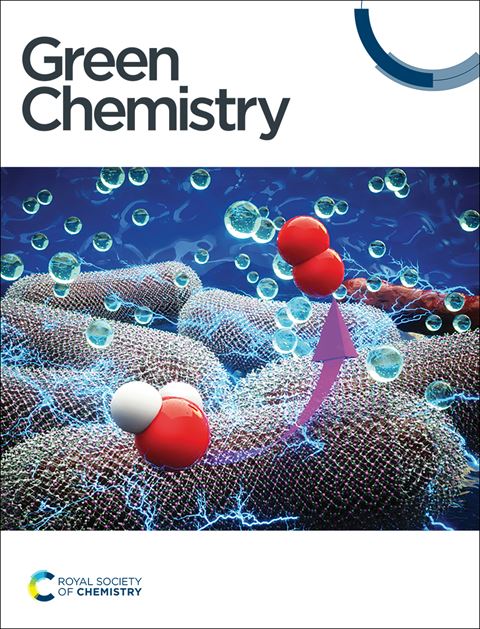A supported Fe/Ru catalyzed three-component relay reaction through a hydrogen borrowing strategy: conversion of crude α-hydroxy acids into valuable N-heterocycles†
IF 9.3
1区 化学
Q1 CHEMISTRY, MULTIDISCIPLINARY
引用次数: 0
Abstract
We developed an Fe–Ru/γ-Al2O3 relay catalyst to promote the multi-component reaction of biomass derived α-hydroxy acids and 2,5-dimethoxytetrahydrofuran with 2-nitroaromatic amines, enabling the synthesis of quinoxalines from inexpensive starting materials in one step. In this strategy, α-hydroxy acids displayed multifunctional roles as a hydrogen source, carbon synthon, and acidic additive. Notably, industrial grade lactic acid and mixed α-hydroxy acids extracted from fruits could be directly used and converted into a normalized quinoxaline product. Significantly, practical synthesis from glucose or fruits and successive transformation into a twisted-intramolecular charge transfer (TICT) based luminogen were accomplished nicely. Mechanistic studies showed that the equilibrium of the dehydrogenation step was promoted through tandem hydrogenation and cyclization reactions. Our work demonstrates the feasibility of chemical transformation of crude bio-based α-hydroxy acids into N-heterocycles and opens the way to provide high-value luminescent materials from biomass.

求助全文
约1分钟内获得全文
求助全文
来源期刊

Green Chemistry
化学-化学综合
CiteScore
16.10
自引率
7.10%
发文量
677
审稿时长
1.4 months
期刊介绍:
Green Chemistry is a journal that provides a unique forum for the publication of innovative research on the development of alternative green and sustainable technologies. The scope of Green Chemistry is based on the definition proposed by Anastas and Warner (Green Chemistry: Theory and Practice, P T Anastas and J C Warner, Oxford University Press, Oxford, 1998), which defines green chemistry as the utilisation of a set of principles that reduces or eliminates the use or generation of hazardous substances in the design, manufacture and application of chemical products. Green Chemistry aims to reduce the environmental impact of the chemical enterprise by developing a technology base that is inherently non-toxic to living things and the environment. The journal welcomes submissions on all aspects of research relating to this endeavor and publishes original and significant cutting-edge research that is likely to be of wide general appeal. For a work to be published, it must present a significant advance in green chemistry, including a comparison with existing methods and a demonstration of advantages over those methods.
 求助内容:
求助内容: 应助结果提醒方式:
应助结果提醒方式:


